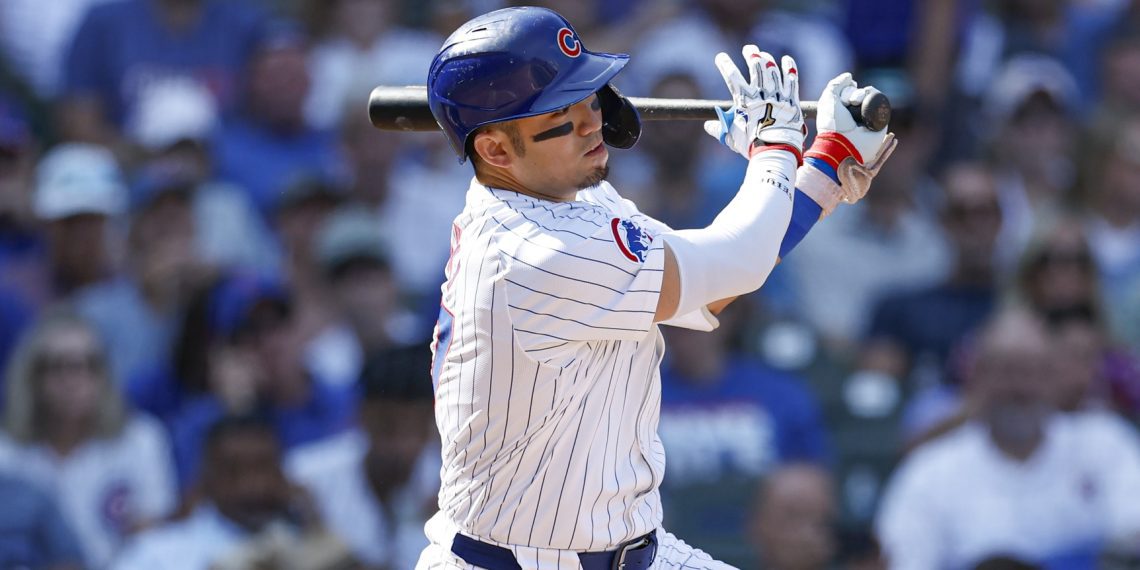Team Dynamics and Suzuki’s Positional Shift
Amidst team transformation, Seiya Suzuki’s $85M contract gets a jolt, forced to switch roles for Chicago Cubs’ revival
The Chicago Cubs, having broken a historic championship drought in 2016, are undergoing a significant overhaul to reclaim their former success. This offseason marks a pivotal moment for the team as they strive to rebuild a competitive roster capable of reaching the highest levels in baseball.
Suzuki’s Unexpected Transition
At the core of the Cubs’ restructuring lies the pivotal decision to shift Seiya Suzuki, a key offensive asset, from his accustomed outfield position to a designated hitter (DH) role. This move, while essential for team balance and strategic alignment, posed a challenge for Suzuki, who has excelled as an outfielder and carries the weight of a substantial $85 million contract.
The Cubs’ outfield reconstruction, featuring players like Kyle Tucker and the emerging talent of Pete Crow-Armstrong, left little room for Suzuki in his traditional defensive spot. Reports indicated Suzuki’s initial reluctance and raised speculations about his future with the team as he considered other potential opportunities that aligned more closely with his preferences.
Navigating Change and Reassurance
Following candid discussions, the Cubs reaffirmed Suzuki’s importance to the team, emphasizing his offensive prowess as a cornerstone of their strategy. Suzuki’s impressive career statistics, including a .824 OPS and a 129 wRC+, underscored his value, prompting manager Craig Counsell to affirm that Suzuki would predominantly fill the DH role moving forward.
With Tucker’s versatility solidifying the outfield and enhancing defensive capabilities, the Cubs have reshaped their lineup to achieve a harmonious blend of offensive power and defensive strength. This strategic realignment sets the stage for Tucker’s impact and the broader implications of his arrival, which will be further analyzed in the subsequent section.
Strategic Roster Development and Future Prospects
The Cubs’ decision to re-sign Kyle Tucker signifies their commitment to assembling a roster of impactful players capable of propelling the team to success. Tucker’s stellar performance in 2024, highlighted by a .289/.408/.585 slash line, 23 home runs, and 49 RBIs, exemplifies his offensive prowess and defensive acumen, as evidenced by his third Gold Glove award that year.
However, despite Tucker’s significant contributions, the Cubs face challenges in their outfield depth, particularly concerning the need for a center-field-capable player to complement the existing lineup. With limited internal options following Mike Tauchman’s departure and positional constraints for certain players, such as Canario and Alcántara, the team must explore external options like Michael A. Taylor and Kevin Pillar to bolster their depth and defensive capabilities.
While Tucker’s presence enhances the Cubs’ prospects for the 2025 season, the team must acknowledge the temporary nature of his tenure, given his impending free agency. The competitive landscape in the National League presents formidable challenges from star players like Mookie Betts, Ronald Acuña Jr., and Juan Soto, underscoring the need for the Cubs to address their depth concerns promptly to maintain a competitive edge in the league.
The Cubs’ strategic roster decisions and Suzuki’s pivotal positional shift reflect a team in transition, poised to navigate challenges and seize opportunities in pursuit of revitalizing their championship aspirations.









